Introduction
Robotic Process Automation (RPA) holds great promise for organizations seeking to streamline their operations and improve efficiency. However, implementing RPA is not without its challenges, both in terms of complexity and cost. In this article, we will explore the various factors that contribute to the cost of RPA implementation, ranging from software licensing fees and development expenses to infrastructure requirements and integration complexity.
We will also delve into the training costs and change management involved in adopting RPA, as well as ongoing maintenance and support expenses. Lastly, we will discuss the concept of Total Cost of Ownership (TCO) and Return on Investment (ROI) when it comes to RPA, and share best practices for optimizing implementation costs. By understanding the intricacies and considerations involved in RPA implementation costs, organizations can make informed decisions that align with their operational objectives and deliver value in the long run.
Scope and Complexity of Processes
To effectively implement Robotic Process Automation (RPA), it's essential to evaluate not just the benefits but also the inherent challenges that accompany modernization. Thoughtful leadership must be exercised to determine which manual processes are most amenable to automation.
By isolating the inefficiencies within these processes, one can assess how RPA might address them. Consideration must extend beyond just identifying suitable processes — it's crucial to analyze the intricacies involved, such as engagement with various systems, data sources, and the underlying complex logic that governs them.
Such complexity often translates into increased investment in terms of time and labor to ensure a seamless transition to automated workflows. With meticulous project scoping, businesses should quantify how often the RPA tool will be utilized and define the metrics for running a cost analysis, ensuring that every aspect of implementation is underpinned by informed decisions. The experience of the NHS Digital Service Team echoes this strategy, emphasizing the importance of comprehensive technology assessments and the discovery of pre-existing solutions that can be leveraged, thereby optimizing resource allocation and controlling costs. Furthermore, factoring in the ongoing requirement for monitoring and upgrades, as highlighted by the CTO of Reveille Software, reaffirms the need for a balanced human-AI partnership post-RPA implementation to maintain system reliability and performance."
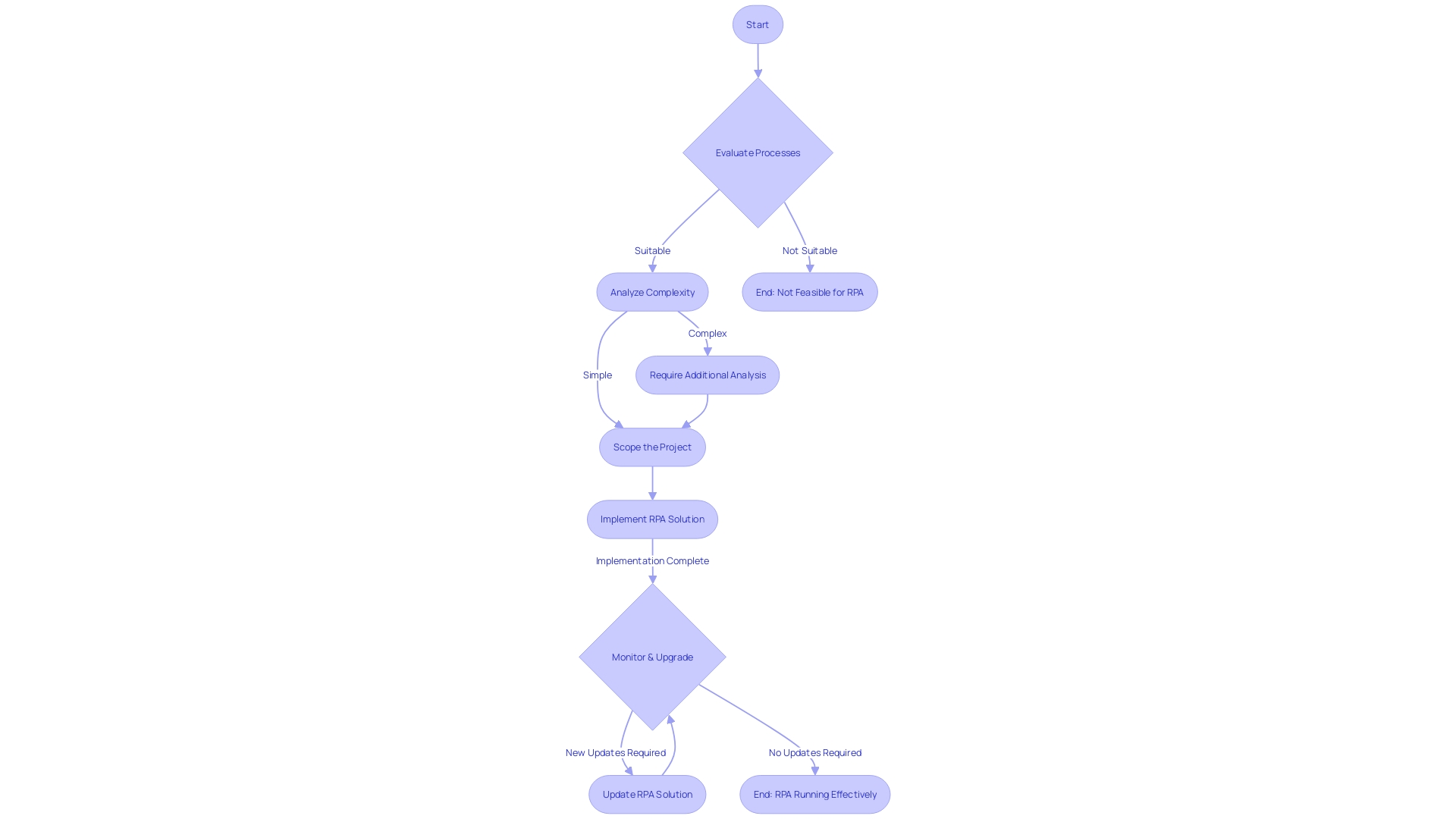
Software Licensing Fees and Development Expenses
Implementing Robotic Process Automation (RPA) involves a thoughtful analysis of what manual processes are ripe for automation and an appreciation for the sophisticated dance of costs and benefits. Software licensing fees form a significant part of RPA implementation costs and tend to vary based on the number of bots, users, as well as the complexity of tasks the bots are expected to execute. Historically, software, often provided as on-premises solutions, came with perpetual licenses obtained through upfront payments—a model that provided predictable costs but lacked vendor-customer alignment post-purchase.
However, with the advent of cloud computing and as-a-service models, licensing has shifted towards subscription-based arrangements. In the context of RPA, development and customization expenses also contribute significantly to overall costs. Fine-tuning RPA solutions to business specifics isn't trivial and requires an understanding of the inefficiencies present in the current processes.
As AI continues to revolutionize this landscape, reducing barriers to entry through advancements in cloud computing and open-source capabilities, it becomes a critical aid in managing and analyzing large data sets so essential for efficient digitalization and automation. The industry is moving towards a future where software pricing may be tied directly to outcomes, signaling a paradigm shift from traditional approaches. Organizations must weigh these factors carefully, ensuring that the commitment to RPA yields not just technological advancement but aligns closely with operational objectives and business value.
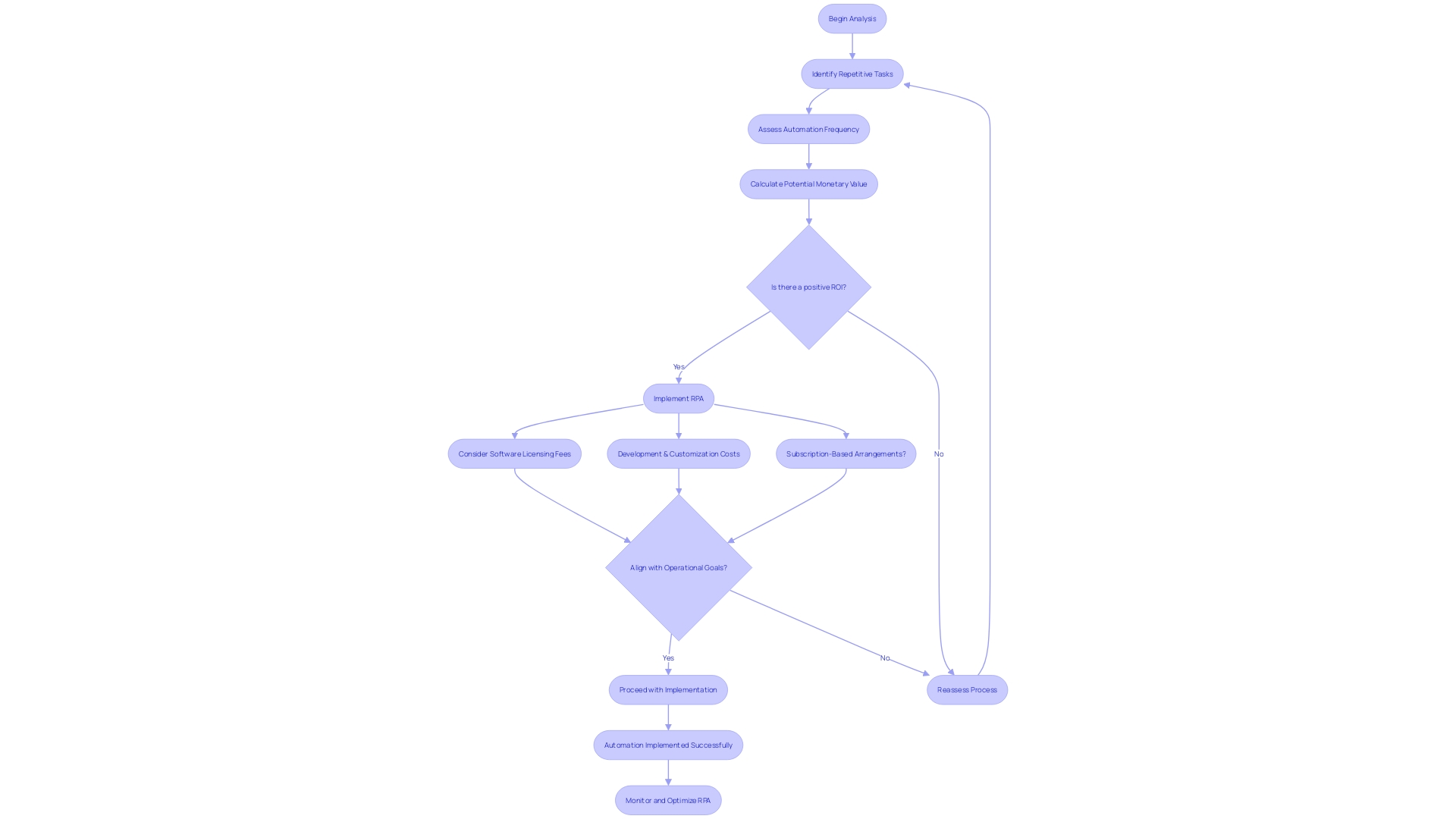
Infrastructure Requirements and Integration Complexity
Navigating the cost of Robotic Process Automation (RPA) requires a detailed understanding of both technical and operational landscapes. Critically, the complexity of integrating RPA can significantly affect the project's budget. As these systems often demand specialized hardware and server setups for optimal functionality.
For instance, consider the case of extracting salient details from a vast array of pitch decks in PDF format. The process requires an RPA solution capable of interpreting not just text, but also graphic elements and spatial relationships between content pieces, which are essential for understanding. Such sophistication in RPA systems can lead to unforeseen complexities and thus higher costs.
To avoid the 'break-fix' pattern of escalating project expenses, careful scoping is imperative. Questions about process suitability, inefficiencies to be addressed, and integration timeframes must be addressed prior to automation. The process of extracting text using tools like pdf-parse exemplifies this step, highlighting the need for concise planning to preempt potential parsing errors.
Complex projects predictably lead to more significant challenges than their less ambitious counterparts, requiring meticulous design and management to keep within the planned budget. This underscores the importance of a thorough project scoping phase, which dictates necessary adjustments in use case development and directly impacts cost based on usage frequency and analysis methods. As such, the decision to implement an RPA solution must be underpinned by a nuanced appreciation for both the technical demands and the strategic planning essential for cost-effective automation.
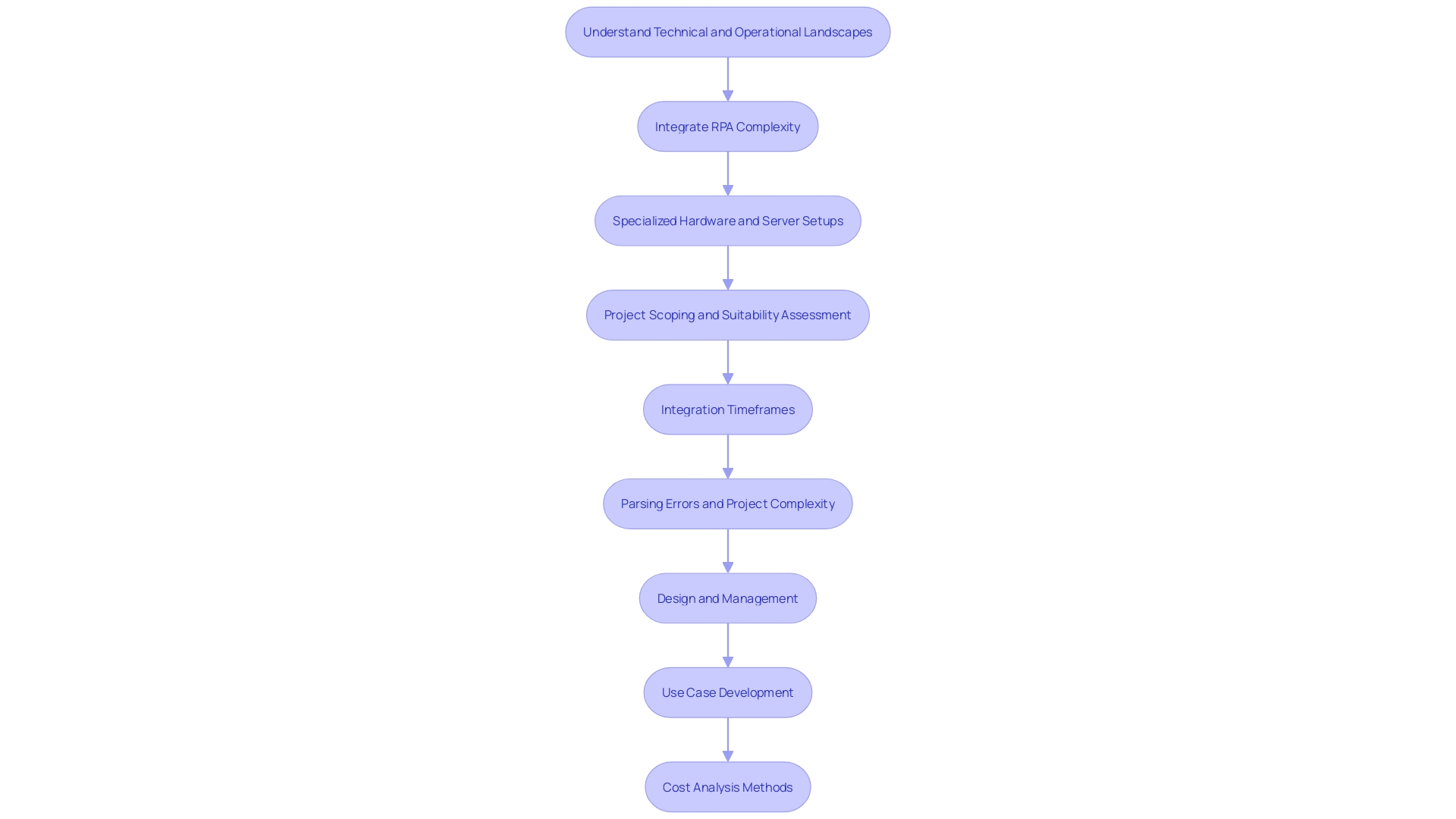
Training Costs and Change Management
The intricacies of RPA implementation go beyond the initial setup. One must delve into the overlooked realm of training and change management to fully understand the cost implications. Training is a necessity, ensuring that employees are skilled in utilizing RPA technologies effectively.
This involves not just educating them on the new tools but also on adapting to the redefined processes and workflows. The stories of organizations like Nets, who strived to make their technical data assimilable for employees, reflect the significance of engaging training methodologies that can indeed incur additional costs. The act of change management further asserts its importance here as communicating transitions, educating stakeholders, and managing resistance is pivotal.
These elements are instrumental for the seamless integration of RPA, yet they augment the overall expenses. Quoting the insights gained from the Digital Service Team's assessment on technological adoption in NHS, we learn the importance of initial assessments in identifying existing inefficiencies and evaluating the cost-effectiveness of adopting new digital technologies. Their experiences underline both the hidden costs, mentioned by the Boston Consulting Group, which reported that only 44% of models reach production, and the evident costs, like investing in project scoping to align with the end-user's needs—an aspect that cannot be underestimated given that changes based on this scoping directly influence the form, content, and frequency of use, as detailed in our cost analysis.
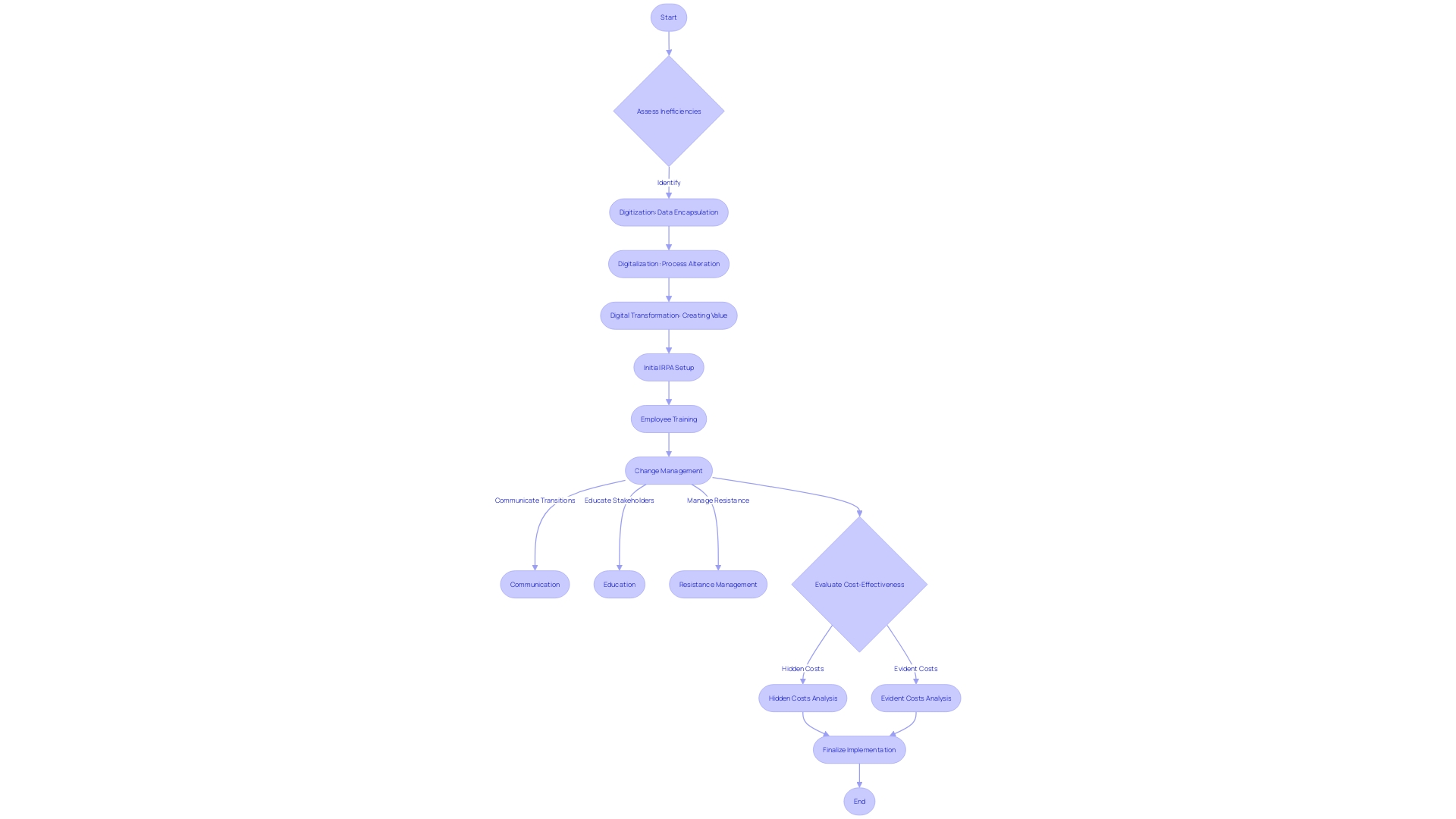
Ongoing Maintenance and Support Expenses
Thorough analysis of specific processes suitable for robotic process automation (RPA) is a must before undertaking the transition. Questions that probe into the appropriateness of automation for particular manual processes, the inefficiencies to be resolved, and the integration costs are critical.
Such diligence is vital in not only planning for the initial investment but also for ongoing expenses, including regular maintenance, software updates, and troubleshooting. The pertinent insights from across sectors, such as healthcare, where technology adoption necessitates rigorous assessment of existing capabilities and compliance requirements, can be instructive.
What's more, the aviation industry exemplifies the high regulatory costs and the resource-intensity of accessing and interpreting airworthiness directives—paradigms that resonate with the periodic updates and support needs of automated systems. The need for ongoing support often entails additional costs, as diligent users may draw upon support services to ensure smooth operation of the RPA tools. As one expert puts it, even with advances in technology, the true challenge lies in effectively leveraging it to facilitate successful digital transformations. In regards to RPA, this includes considering the frequency of tool usage and defining a cost analysis metric, crucial factors in the holistic assessment of RPA implementation costs retrieved as of October 2023, exclusively in dollars.
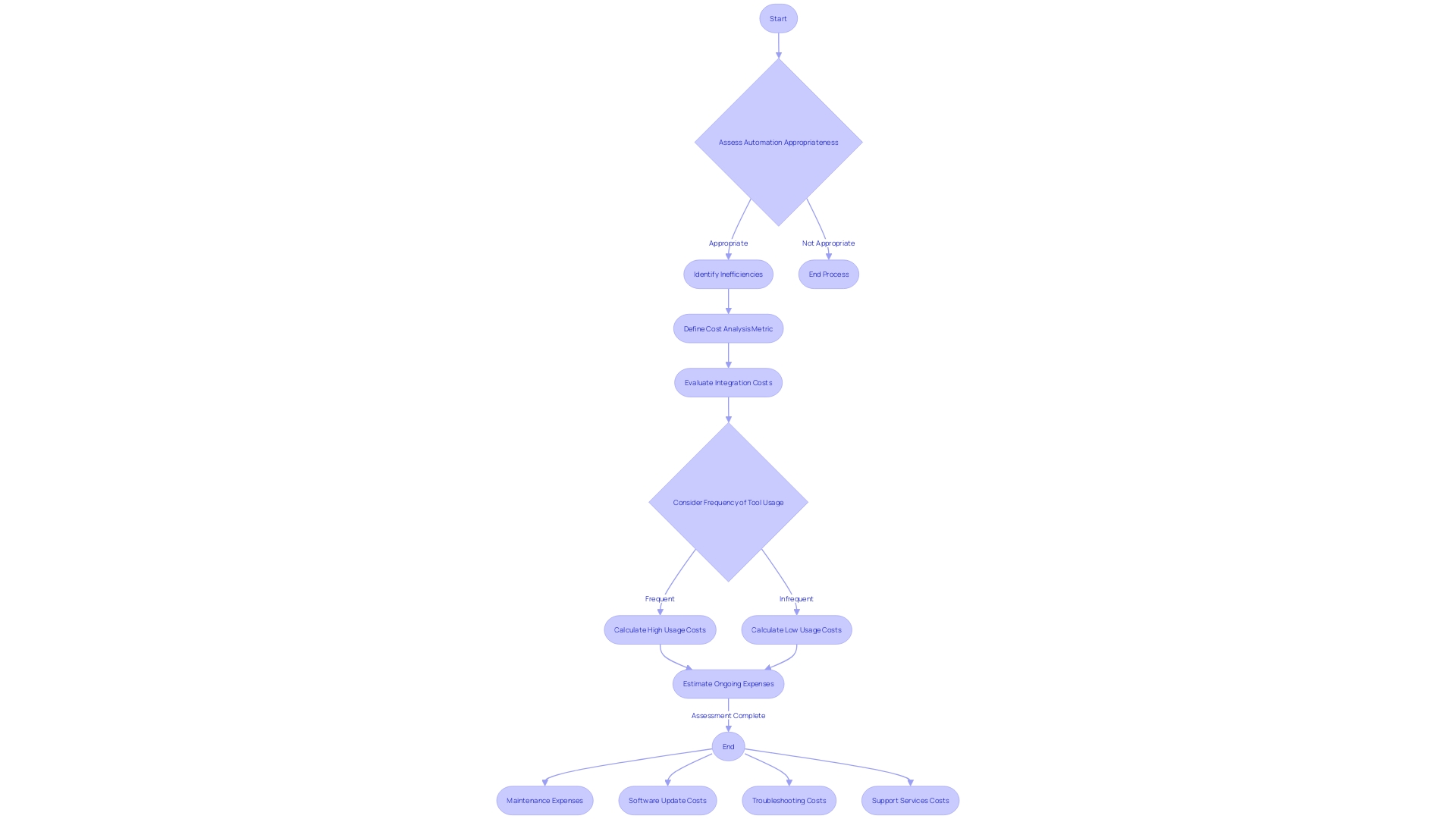
Total Cost of Ownership (TCO) and Return on Investment (ROI)
Delving into the financials of robotic process automation (RPA) isn't just a matter of initial outlay—it's an in-depth analysis of every cost from the start, maintenance, to continuous improvement. Beyond the price of implementation lies the terrain of regular expenditures such as support, licensing, and empowering the workforce with the necessary training. To gauge the potential upsides, one must ask pointed questions: What processes are ripe for RPA?
Which inefficiencies call for digital intervention, and what costs shall we incur to usher in this transformation? It's a strategic balancing act, measuring the quantum of investment against the promised efficiencies. Akin to fine-tuning Stark Industries’ latest technology, it is about architecting a system that not only amps up productivity but harmonizes with your organization's overarching strategic imperatives.
You must navigate through a matrix of criteria, including how often automations run, their financial yield, peak demand forecasting, and digital data structuring. Indeed, modern software testing has transcended its old reputation as a financial sinkhole to that of a significant ROI generator—but this pivot hinges on the adoption of contemporary methodologies. By scrutinizing these multifaceted aspects, we unlock a granular understanding of RPA’s long-range fiscal impact and its potential ROI.
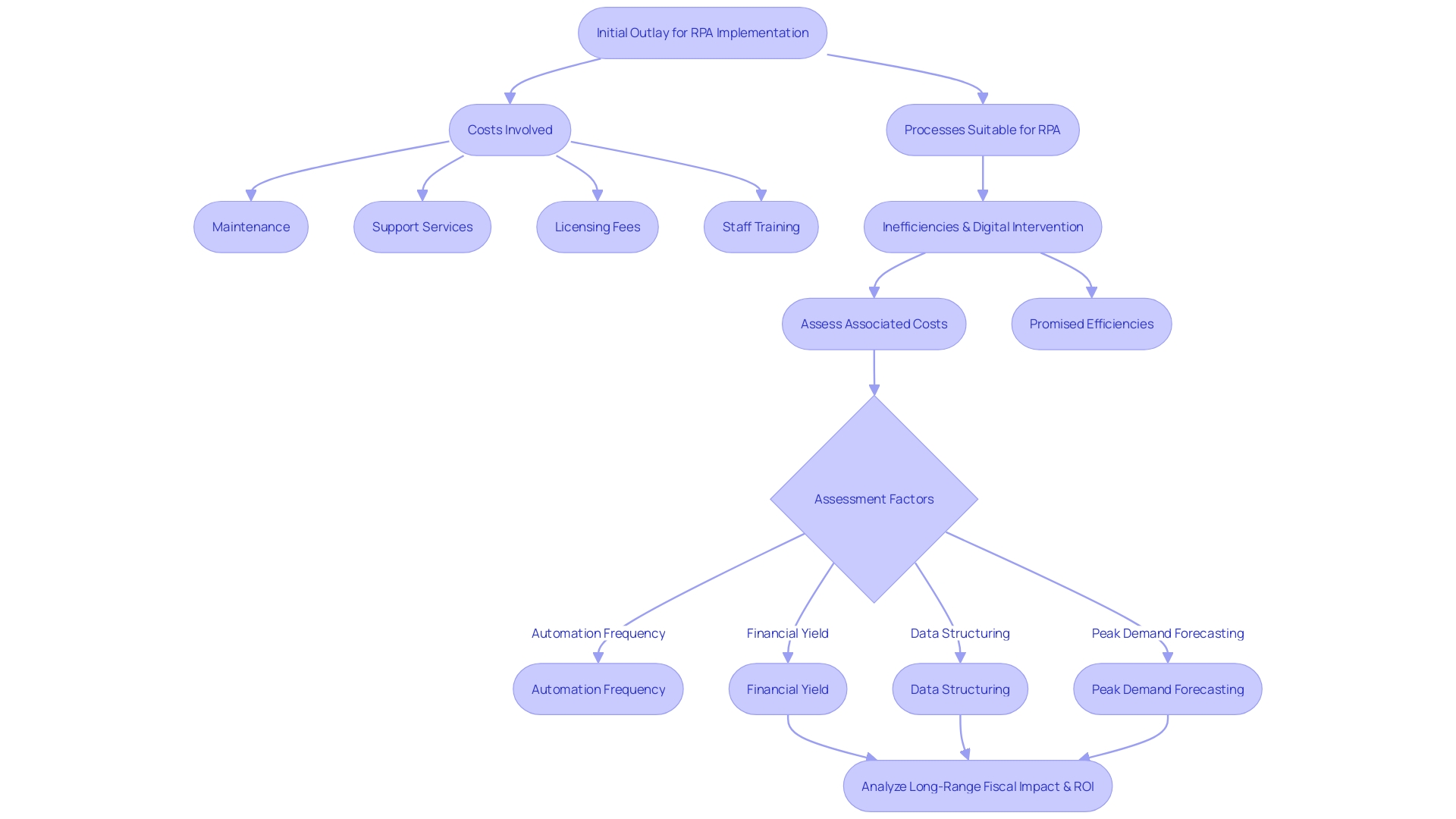
Best Practices for Optimizing RPA Implementation Costs
Embarking on a journey of automating processes with Robotic Process Automation (RPA) requires a measured approach, where understanding the intricacies of your current operations is crucial. It's not merely about finding tasks to automate; it's about strategically identifying manual processes that are candidates for automation and recognizing the inefficiencies that RPA can address.
One should seek to answer key questions about the suitability of processes for automation, the specific inefficiencies to be tackled, and the integration time and expenses associated with RPA software for each process. Particularly important is a well-architected framework review, which serves as a pre-implementation ritual to ensure a focus on performance efficiency.
This also implies acknowledging common complexities within market systems that offer an opportunity for RPA to simplify and streamline operations, thereby reducing administrative costs. In fact, complexity in operations often leads to increased costs and decreased transparency—a challenge that can be mitigated through the implementation of standardization and automation.
For instance, one insightful statistic from the healthcare industry reveals how a primary care physician faces a staggering $20.49 in billing costs for a single visit, underscoring the potential financial benefits of automating such processes. While alluring, the promise of RPA should never overshadow the necessity to establish a foundation that involves useful patterns in data, crucial for any successful technological application. Thus, rather than hastily moving towards RPA, a rigorous analytical approach that contemplates the benefits, challenges, and potential cost savings should guide the automation initiatives. Effective negotiation with RPA software vendors and exploring cost-efficient infrastructure options can be pivotal, as is the commitment to comprehensive training and robust change management strategies to ensure seamless user adoption and avoidance of expensive errors during the transition period.
Conclusion
In conclusion, implementing Robotic Process Automation (RPA) requires careful consideration of various factors that contribute to its cost. The scope and complexity of processes, software licensing fees, and development expenses are key cost considerations. Additionally, infrastructure requirements and integration complexity can significantly impact the project's budget.
Training costs and change management are important but often overlooked aspects of RPA implementation. Ongoing maintenance and support expenses should also be factored in. Understanding the Total Cost of Ownership (TCO) and Return on Investment (ROI) is essential for evaluating the long-term financial implications of RPA.
To optimize RPA implementation costs, organizations should strategically identify manual processes suitable for automation and implement well-architected frameworks. Standardization can streamline operations and reduce administrative costs. Effective negotiation with vendors, exploring cost-efficient infrastructure options, comprehensive training, and robust change management strategies are also key to successful and cost-effective RPA adoption.
By carefully considering these factors, organizations can make informed decisions that align with their operational objectives and deliver value in the long run. RPA has the potential to streamline operations and improve efficiency, but it is important to understand and manage the costs associated with its implementation. Through strategic planning and adherence to best practices, organizations can optimize the implementation costs of RPA and maximize its benefits.
Ready to optimize your RPA implementation costs and maximize benefits? Contact BestToolbars today!





